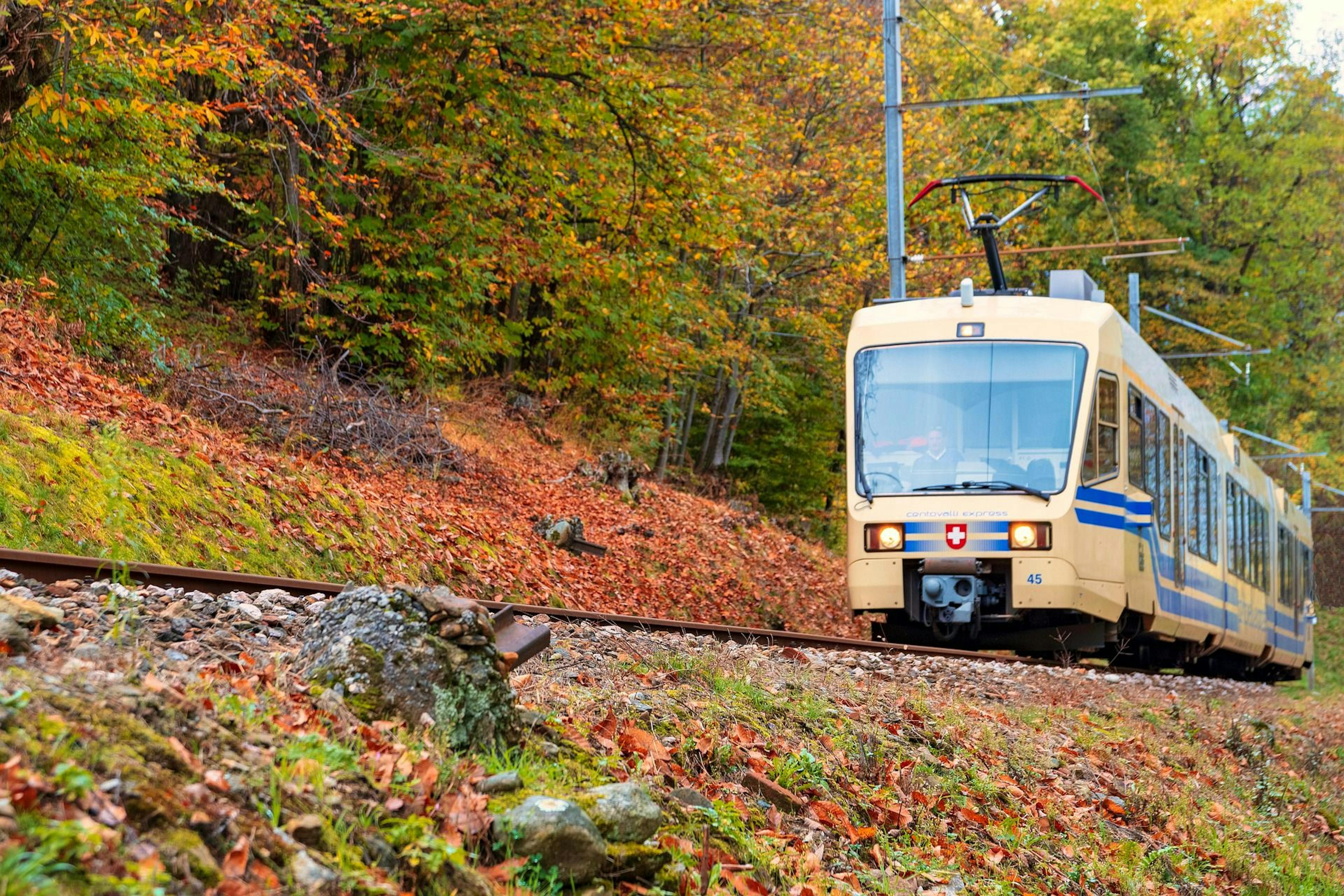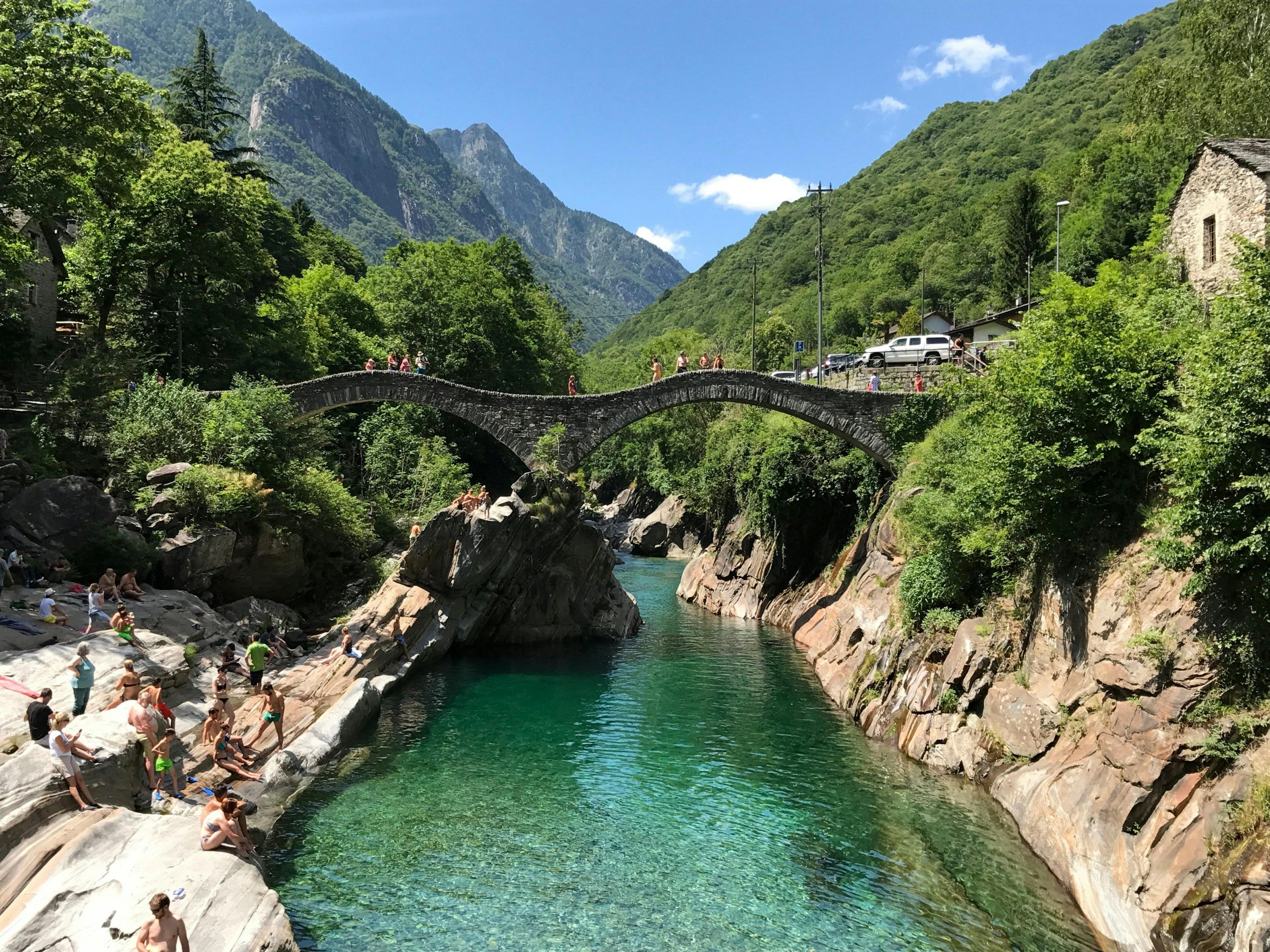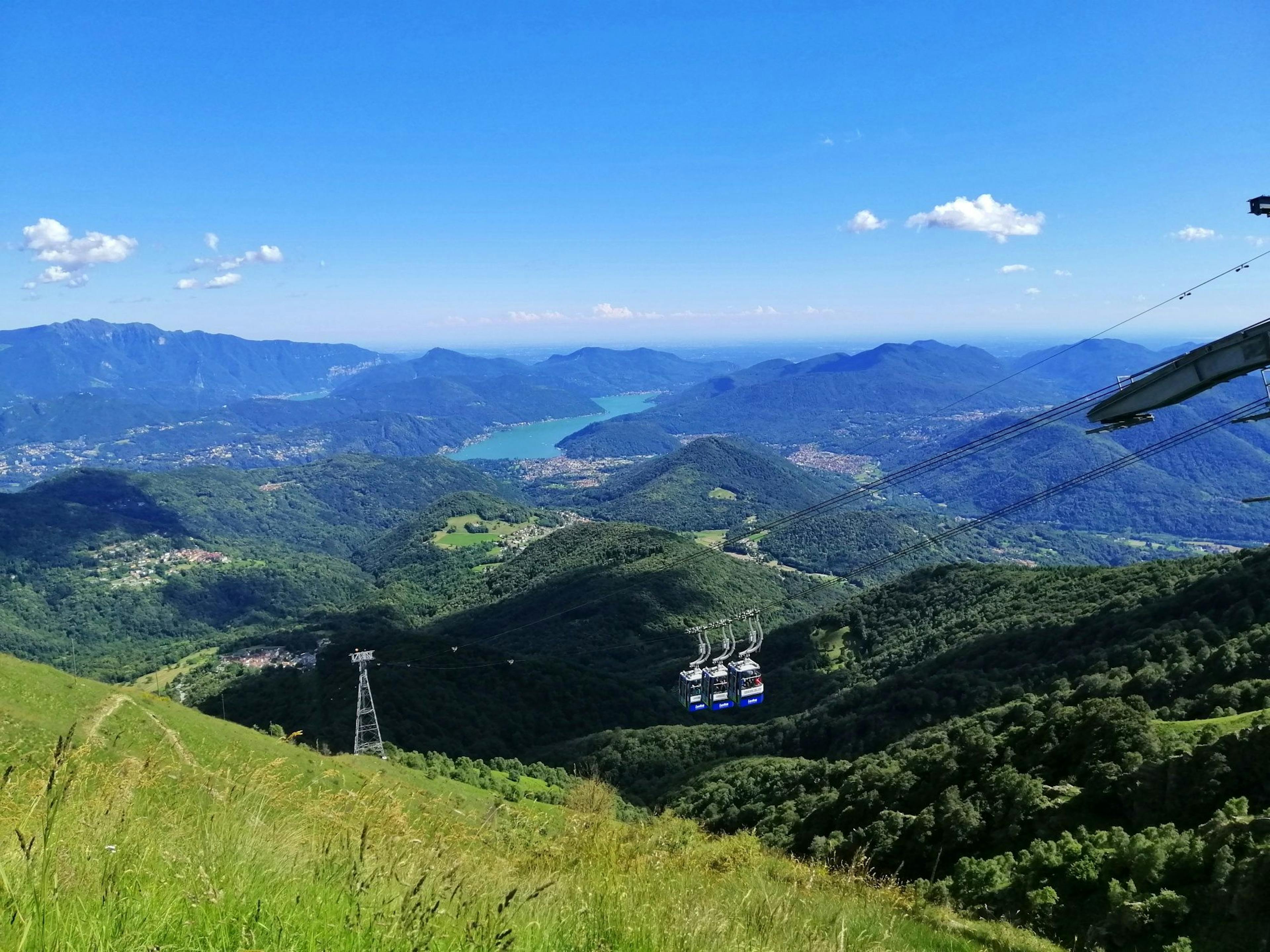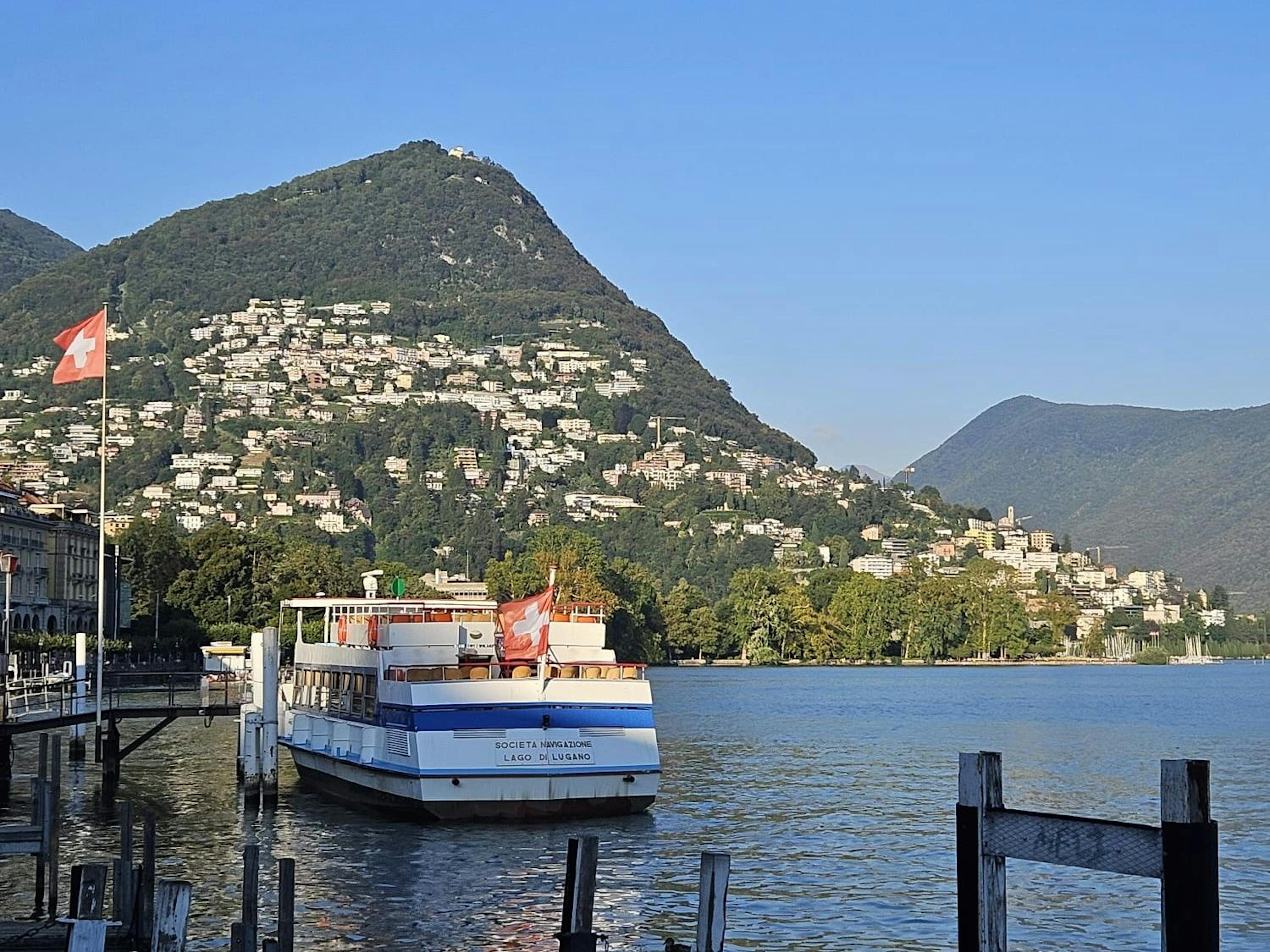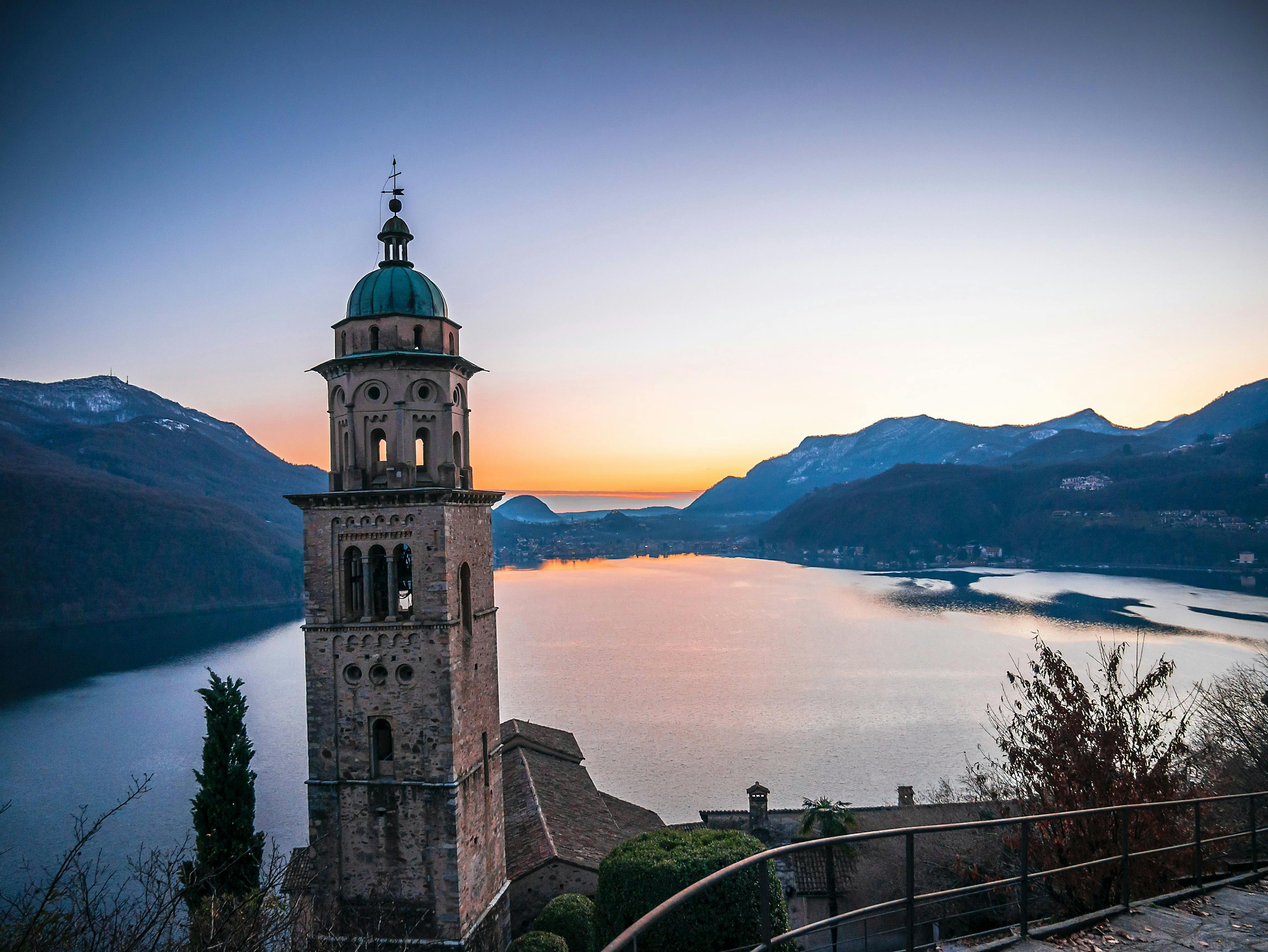6 Highlights of the Centovalli Railway
- The Centovalli Railway runs over 83 bridges and viaducts and through many tunnels.
- You travel for around two hours through largely untouched nature with small settlements. The route is 51.25 km long.
- The route runs for long stretches directly along the beautiful River Melezza. It flows into the River Maggia after 42 km.
- Centovalli (100 valleys) refers to the large number of branching valleys along the Melezza riverbed.
- You will see a number of beautiful waterfalls and extensive forests along the way.
- The Centovalli Railway is a narrow-gauge railroad with a track gauge of 1000 mm.
 Camedo Centovalli Bahn (Foto: Schweiz Tourismus, Marcus Gyger)
Camedo Centovalli Bahn (Foto: Schweiz Tourismus, Marcus Gyger)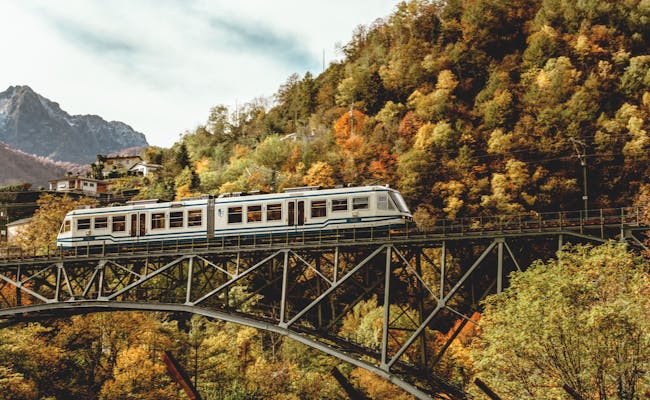 Zug in Intragna (Foto: Schweiz Tourismus, Rob Lewis Photography)
Zug in Intragna (Foto: Schweiz Tourismus, Rob Lewis Photography)The route of the Centovalli Railway
The Centovalli Railway runs between Locarno (FART station) and Domodossola. The leisurely narrow-gauge railroad crosses many valleys over a total of 83 bridges and viaducts on a route of almost 52 km. The journey takes around two hours. This gives you the opportunity to admire the beautiful nature along the way. In addition to the many valleys (there are probably not really 100), you will see wooded mountains and hills and a number of waterfalls that plunge into the Melezza River. The river accompanies you for 42 km between Malesco and where it flows into the Maggia near Locarno.
All stations of the Centovalli Railway:
- Locarno FART (start or destination)
- Locarno S. Antonio
- Ponte Brolla (only stop to get off)
- Intragna
- Camedo
- Centovalli
- Re
- Malesco
- S. Maria Maggiore
- Druogno
- Trontano
- Masera
- Domodossola (start or destination)
 Palagnedra mit Stausee des Melezza (Foto: Switzerland Tourism, Jan Geerk)
Palagnedra mit Stausee des Melezza (Foto: Switzerland Tourism, Jan Geerk)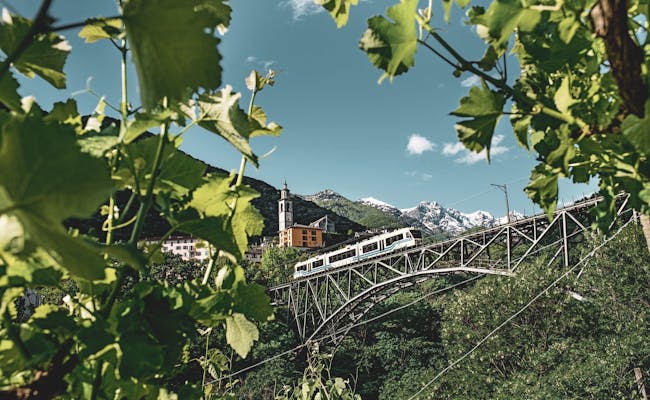 Intragna Centovalli Bahn (Switzerland Tourism, Marcus Gyger)
Intragna Centovalli Bahn (Switzerland Tourism, Marcus Gyger)The first section from Locarno runs through a tunnel. The tunnel ends at the Solduno S. Martino stop. As far as Ponte Brolla, the route still runs through the Maggia Valley. The actual Centovalli begins at Intragna and this is where the route begins to climb more steeply.
In Italy, the line runs as an extension of the Centovalli through the Valle Vigezzo and reaches the highest point of the route in Santa Maria Maggiore at 836 m above sea level. From here, the route descends again. Between the towns of Trontano and Masera, the gradient in the Toce valley is particularly steep (60 per thousand). Domodossola station is the terminus and is also underground.
 Bordei Parco Nazionale-del-Locarnese (Foto: Schweiz Tourismus, Renato Bagattini)
Bordei Parco Nazionale-del-Locarnese (Foto: Schweiz Tourismus, Renato Bagattini) Locarno Cardada Platform (Foto: Schweiz Tourismus)
Locarno Cardada Platform (Foto: Schweiz Tourismus)Swiss Activities Tip
The Centovalli and the Valle Vigezzo as a whole are still known today as "the valley of the chimney sweeps". From the 16th century onwards, children from poor families in the valley were often hired out as chimney sweep assistants. They were mostly sent to northern Italy, especially Milan. They were small children who were adept at climbing down narrow chimneys. They were called "Rüsca".
You can visit a museum about the Rüsca in Santa Maria Maggiore. The Chimney Sweep Museum (Museo dello Spazzacamino) at Villa Antonia has an interactive and multimedia exhibition. Even today, chimney sweeps come to Santa Maria Maggiore for a meeting on the first weekend in September. In the neighboring village of Malesce, there is a memorial to a young chimney sweep who fell from a roof in 1929 at the age of 12.
The two terminus stations of the Centovalli Railway
The two terminus stations of Locarno and Domodossola are definitely worth a visit. Here we tell you what you can see in these towns.
Locarno
Locarno is a very beautiful town in Ticino. It offers a romantic lakeside promenade on the shores of Lake Maggiore. The old town with the famous Piazza Grande is also very beautiful and inviting. The pilgrimage church of Madonna del Sasso is in an elevated position and therefore offers the best view of the magnificent panorama. It can be easily reached from the city center via a funicular railroad.
Domodossola
Domodossola has a beautiful historic center that has recently been extensively renovated. There is also a special feature on the outskirts of the city. There you can visit the Sacro Monte di Domodossola. This pilgrimage site is part of the famous Sacri Monti. The Sacri Monti can be found in both Piedmont and Lombardy. They have been a UNESCO World Heritage Site in northern Italy since 2003.
 Locarno Madonna-del-Sasso (Foto: Schweiz Tourismus, Silvano Zeiter)
Locarno Madonna-del-Sasso (Foto: Schweiz Tourismus, Silvano Zeiter) Domodossola Gemeindehaus
Domodossola Gemeindehaus Rasa Parco Nazionale del Locarnese (Foto: Schweiz Tourismus, Renato Bagattini)
Rasa Parco Nazionale del Locarnese (Foto: Schweiz Tourismus, Renato Bagattini) Intragna Village (Foto: Schweiz Tourismus, Rob Lewis Photography)
Intragna Village (Foto: Schweiz Tourismus, Rob Lewis Photography) The villages of Valle Vigezzo (Italian side)
The towns in Valle Vigezzo on the Italian side of the railroad line include
- Re
- Malesco
- S. Maria Maggiore
- Druogno
- Trontano
- Masera
Re
The village with the short name Re is a famous place of pilgrimage. The Madonna del Sangue pilgrimage church resembles a mosque from a distance. It was built in the 20th century after the 17th century church could no longer accommodate the many pilgrims. The two churches are now connected.
according to tradition, a miracle took place here in 1494. The fresco of a Maria lactans is said to have wept bloody tears for 20 days after being struck by a stone.
Malesco
More than 1000 inhabitants live in Malesco. The components of the ecomuseum are particularly worth seeing. The Basilisco fountain next to the frescoed church depicts a dragon climbing on a stone. The old Mulino dul Tač mill is also part of the ecomuseum.
Santa Maria Maggiore
The village with the beautiful name has four churches, of which the parish church of Santa Maria Assunta is considered one of the three most beautiful churches in Ossola. The valley of the Toce is known as the Ossola Valley. Only the bell tower remains from the original church, the rest was rebuilt in the 18th century. The frescoes inside make the church so uniquely beautiful.
Druogno
Druogno is also a village with more than 1000 inhabitants. The church is decorated with frescoes. There are also four oratories and a prayer chapel, mostly from the 17th and 18th centuries. A summer mountain colony from the 1930s now houses a large multimedia museum exhibition. It is called Museo UniversiCà and shows traditions and trades of the early 20th century.
Trontano
Trontano lies between vineyards. There is a nature trail between Trontano and Verigo. In addition to nature, you can also discover the old mills of the Rio Graglia. Six small stone mills stand by the river, explained by information boards.
Masera
You will also find a church decorated with frescoes in this village. It was built in the 19th century to replace a church from the 11th century on the same site. The Oratory of San Rocco has frescoes dating back to 1402. An old signal tower from the 15th century stands not far from the village. The Torrente Melezzo Occidentale river flows directly past Masera. It comes from the Valle Vigezzo and flows into the River Toce not far from Masera.
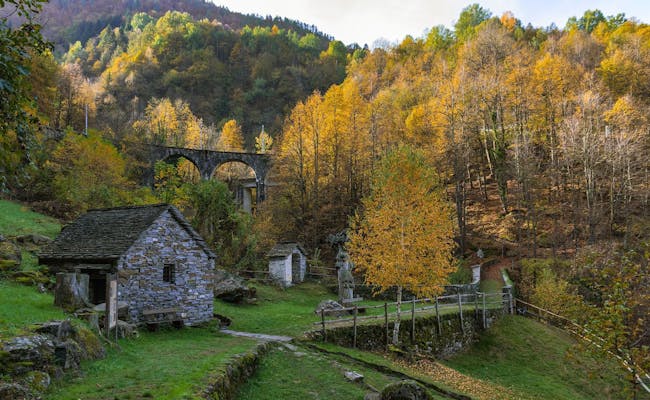 Tal Vigezzo
Tal Vigezzo  Santa Maria Maggiore Kirche
Santa Maria Maggiore KircheAlpine hikes along the Gran Via del Devero
The Gran Via del Devero is a beautiful and interesting hiking trail through the Italian Alps. You walk along paths that were used centuries ago to cross the Ossola region and reach Switzerland. You pass through the idyllic Val d'Ossola and walk around Monte Cistella.
The alpine trekking route starts in the Ossola plain and connects the Antigorio, Buscagna, Cairasca and Divedro valleys. From Domodossola and Crevoladossola, you reach Foppiano, Alpe Devero and Alpe Veglia. In total, the route covers around 90 km and 9000 meters in altitude.
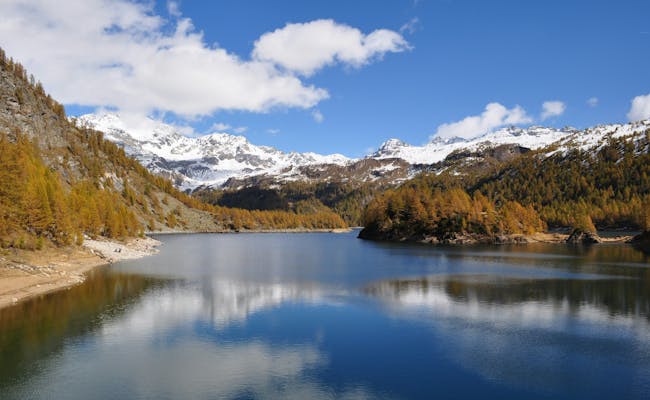 Alpe Devero Italien
Alpe Devero Italien Alpe Veglio Italien
Alpe Veglio ItalienThe Centovalli Railway is something special. Not only does it cross 83 bridges, it also passes through many tunnels. It travels comfortably through the Centovalli and Vigezzo valleys, making it extremely popular. This also brings tourism to the valleys, which for many decades were plagued by bitter poverty despite their beauty.
